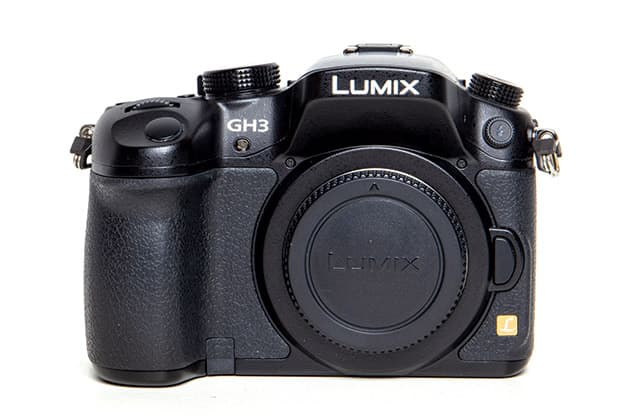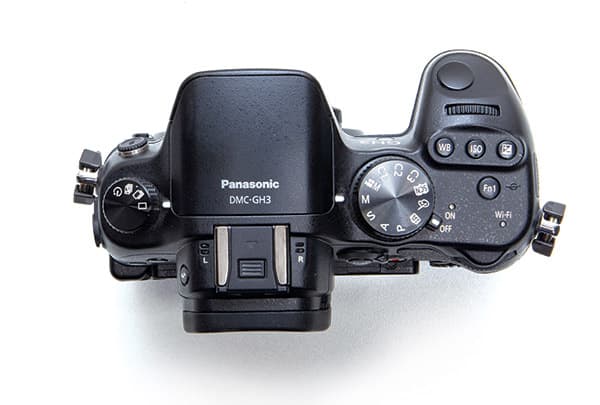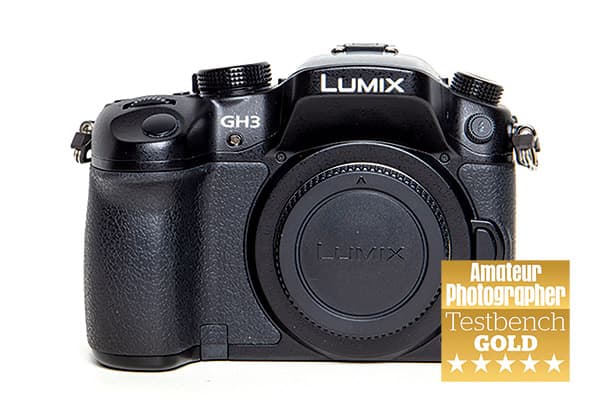
The GH3’s chunky handgrip lets you get a good solid grasp of the camera in your right hand
Successor to the Lumix GH2 and announced at Photokina in September 2012, the Lumix GH3 has long been a popular camera with photographers and videographers. It was a model that changed many people’s perception of Micro Four Thirds and offered much more besides its 16MP MOS sensor and extended ISO125-25,600 range. A key feature at the time was its ability to shoot Full HD video at up to 60fps with a bit rate of 72Mbps. This combined with its microphone and headphone ports quickly saw it become popular for semi-professional movie production. A magnesium-alloy die-cast body and weather-sealed panels ensured that it was much tougher than its predecessor. At the rear it presents a 3in, 614k-dot variable-angle touchscreen and an OLED EVF with 1,744k-dot equivalent resolution. Unlike the GH2, it also introduced built-in Wi-Fi connectivity.
Panasonic Lumix GH3 at a glance
- £220-£290 body only (via MPB.com)
- 16.1MP Micro Four Thirds sensor
- ISO 125-25,600 (extended)
- Single card slot
- 1.744-million-dot OLED EVF
- 470g
For and against
+ Weather-resistant magnesium-alloy body
+ Comfortable handgrip
+ Many lightweight lenses available
– No ISO 100 sensitivity setting
– Single SD card slot
– Some buttons/dials are plasticky
What we said
- ‘The GH3’s class-leading video features are sure to please serious movie makers.’
- ‘It has strong competition from other CSCs with built-in EVFs, such as the Olympus OM-D E-M5, Samsung NX20 and the Sony NEX-7.’
- ‘Panasonic clearly views its CSCs as a viable alternative to a DSLR system.’
- ‘The sensor provides the best low-light performance from a Four Thirds camera to date.
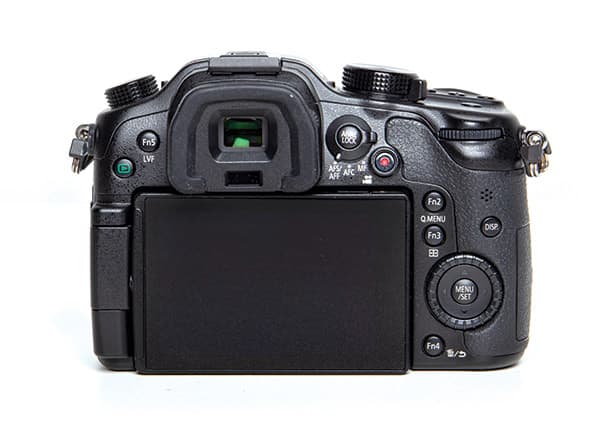 What to pay
What to pay
Head to MPB.com, type Lumix GH3 into the search bar and you’ll find a good selection of second-hand examples. Just before this issue went to press there were ten GH3s to choose from in various conditions. Models inspected to be in ‘good’ condition cost between £220 and £240. Panasonic Lumix GH3s in ‘like new’ condition with a battery, charger, strap, and manual require you to spend around £25 more.
How it fares today
Six and a half years have passed since the GH3 was launched. In this time the GH series has advanced greatly, but that’s not to say you can’t get great results out of the GH3 today provided you’re aware of its limitations. The low-light performance doesn’t match that of today’s GH5 and the resolution of the screen isn’t fantastic. It was also the last GH series camera to only have Full HD video, with 4K being introduced on the GH4.
New alternatives
The GH series has continued to evolve, with today’s 20.3MP GH5 taking a similar stance at appealing to enthusiasts and pros shooting stills and video. It provides broadcast-standard 10bit 4:2:2 4K recording at 30fps, along with high-quality 4K capture at 50/60p. Buttons are plentiful and integrate well with a 3.2in,1.62-million-dot vari-angle touchscreen. Optical purists can’t fail to be impressed by the 3.68-million-dot EVF.
What the owners think
Three Panasonic Lumix GH3 users give their verdict
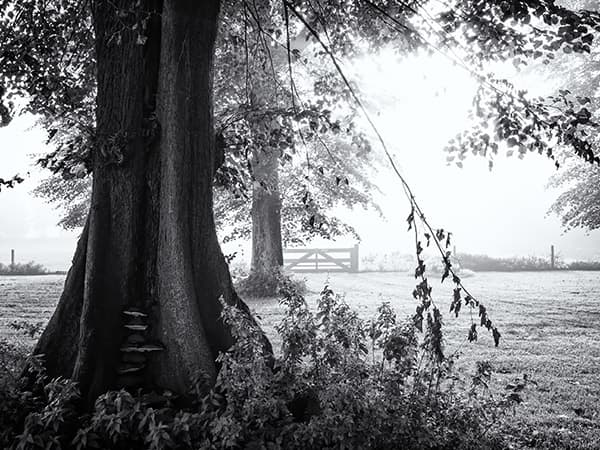
Photographers should factor in the 2x crop factor when buying lenses. Panasonic Lumix GH3, Leica DG Summilux 15mm f/1.7 ASPH, 1/200sec at f/4, ISO 200. Credit: Paul Beentjes
Paul Beentjes
‘Like so many, the main reason I moved to the Micro Four Thirds system was for the size and weight benefits. Over the years I’ve learnt the weight of my bag has a big role to play, especially when I usually end up carrying it for hours at a time without rest. I chose the GH3 above other models on the basis of how it felt in my hand. Some cameras you just pick up and love and the Lumix GH3 was one of them. I instantly knew it would lighten my load and save my aching back at the same time. Some might argue that it’s a fairly big Micro Four Thirds camera, but personally I think it offers the perfect blend between being lightweight and manageable. Paired up with fast primes it delivers beautiful results and the dynamic range isn’t bad either. I have been carrying it around for six years now and I’ve been impressed by its robustness. No cold, heat, rain or snow has yet stopped me from using it. It has taken the occasional tumble along the way (once it was even submerged completely in water), but my example is still going strong. I do occasionally ogle other cameras, but so far none of them have convinced me enough to abandon my trusty companion.’
For and against
+ Feels like a miniature DSLR in the hand
+ Robust build quality
– Circular control wheel could be more responsive
– Menu system can take a while to learn

Low-light shooting isn’t one of the GH3’s strengths, but usable results can be obtained at ISO 1600 as this example shows. Panasonic Lumix GH3, Lumix G Vario 7-14mm f/4 ASPH, 1/20sec at f/4, ISO 1600. Credit: Amy Davies
Amy Davies
‘I bought my GH3 in 2014 just as I was about to embark on a two-week road trip across the West Coast of the USA. At the time, mirrorless cameras were still relatively new and the Micro Four Thirds system offered the best solution in terms of lenses and accessories. My main camera back then was a Canon EOS 6D but I felt this was too bulky and heavy, especially after factoring in the weight and size of lenses. A Panasonic cashback offer brought the price of a new GH3 down to £400 – considering the camera was only a couple of years old in 2014, it was a cracking bargain. I used it with a 7-14mm ultra wideangle lens and 25mm f/1.4 prime. For a general walk-around lens I used a 12-35mm f/2.8. I loved how small and light it was, while still having plenty of direct access controls across the body, plus a viewfinder and articulating screen. I parted ways with the GH3 last year as I’d moved on to the G9 and felt the GH3 would be better in the hands of somebody who could get more use from it. It held its value exceptionally well, and perhaps thanks to the cashback offer, I was able to sell it for not much less than I paid for it, almost four years later.’
For and against
+ Great travel camera
+ Small and lightweight
– Noisy low-light images
– No 4K video
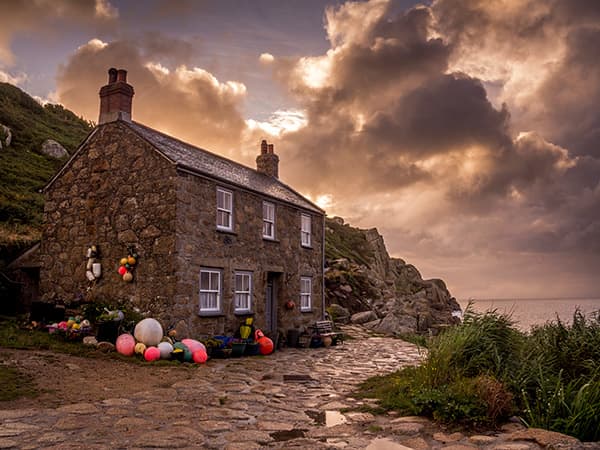
The GH3’s practical size and weight is advantageous when you end up trekking long distances to remote locations. Panasonic Lumix GH3, Lumix G Vario 14-45mm f/3.5-5.6 ASPH, 1/100sec at f/8, ISO 125. Credit: Damian Ward
Damian Ward
‘I bought my Panasonic Lumix GH3 in 2013 and used it as my main camera until 2017 after it started to develop a few problems. I used the camera nearly every day, so it was a good workhorse for me during this time. I was drawn to the GH3 and the Micro Four Thirds system for its weight-saving benefits and large choice of lenses. The other benefits of the camera that I liked were the weather-sealing, long battery life and fully articulated screen. I was always happy with the results the camera gave me. The colour of images are nice and natural but still have good vibrancy to them. People often complain about the low-light performance of smaller-sized sensors, but it never bothered me, as I always shot on a tripod allowing me to keep the camera in its lowest ISO setting. That said, I think images taken at ISO 1600 are still acceptable. I would definitely recommend the GH3 to anyone who is looking to pick one up cheaply on the second-hand market.’
For and against
+ Large selection of MFT lenses available
+ Excellent articulated screen
– Developed some operational issues
– Some buttons feel a little plasticky

